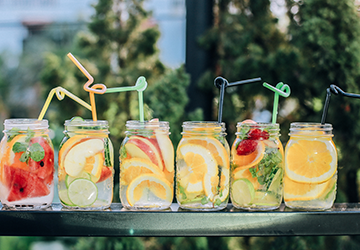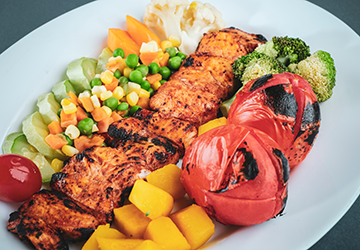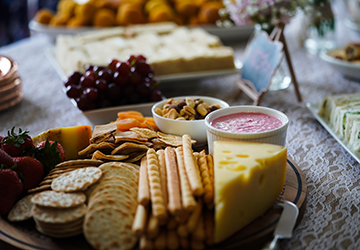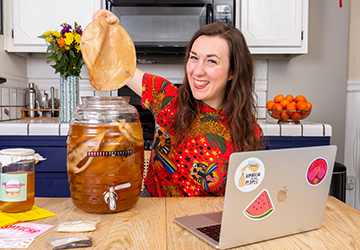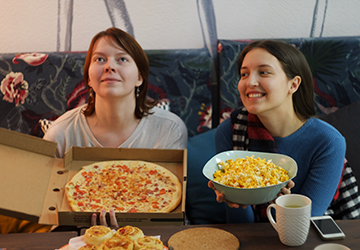How to Create the Ultimate Charcuterie Board for Entertaining
There's an art to creating the ultimate charcuterie plate and a great way to impress your guests at any party. A well-crafted charcuterie board is a great conversation starter and offers a variety of flavors and textures. This guide will look at making an eye-catching and visually stunning charcuterie board for your upcoming party.
So let's start exploring the hidden tricks for a great party starter!
Choosing Your Board
The foundation of your charcuterie masterpiece is the board itself. Choose a board large enough to hold all your ingredients without overcrowding. Wood, marble, or large cutting boards work well. Make sure the material is food safe and easy to clean.
Selecting the Perfect Meats
The star of every sausage table is, of course, the meat. Here are some heart categories to consider:
l Cured Meats
Cured meats, such as prosciutto, salami, and coppa, are a staple of cured meats. Choose from different textures and flavors to keep your guests curious and delighted.
l Pâtés and Terrines
Rich and flavorful liver, meat or seafood pies and terrines add depth to your dishes.
l Smoked Meats
Smoked meats, such as smoked salmon or duck breast, lend a distinctive smoky flavor.
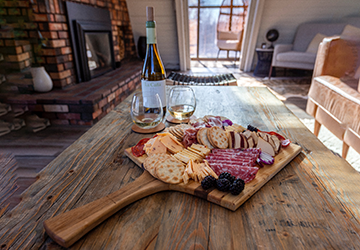
The Art of Cheese Pairing
Cheese is another important part of a sausage platter. Consider the following categories when choosing cheese:
l Aged Cheeses
Aged cheeses like cheddar, Gruyère, or Manchego have a firm texture and complex flavor profile.
l Soft Cheeses
Soft cheeses such as Brie, Camembert, or goat cheese provide a soft and subdued contrast to the rich, meaty flavors.
l Blue Cheeses
For those who like a little funk, blue cheeses like Gorgonzola, Roquefort, or Stilton are perfect additions.
Crunchy Accompaniments
Adding a little crunch to your board is important. The following should be noted:
l Crackers and Bread
Choose from a variety of biscuits, sliced baguettes or country breads to provide a canvas for your meats and cheeses.
l Nuts
Nuts like almonds, walnuts, or pistachios add a delicious crunch that pairs well with meats and cheeses.
Sweet and Savory Spreads
Spreads like fig butter, honey, or whole-grain mustard create a sweet or savory contrast to the richness of meats and cheeses. Explore different flavors and textures to discover ideal combinations that complement each other.
Fresh and Dried Fruits
Add fresh and dried fruit to your charcuterie board for natural sweetness and color. Grapes, apple slices and berries are new options, while dried apricots, figs or dates add a tangy, chewy sweetness.
Pickled and Marinated Goodies
Pickled vegetables and marinated olives bring a tangy savory flavor that balances the richness of the meats and cheeses. Consider adding classics like gherkins or pickled artichoke hearts, as well as unique options like pickled asparagus or pickled mushrooms.
Garnishes and Extras
Ornaments add a finishing touch to your sausage board. Fresh herbs like rosemary or thyme look beautiful and add a pleasant aroma. Dark chocolate or edible flowers are available as options for vibrant color and flavor.
Wine and Beverage Pairings
Pairing your charcuterie plate with the right wine or beverage enhances the experience. Champagne or Prosecco complement the salty and fatty flavors of meats and cheeses. Alternatively, a light and refreshing beer or refreshing cocktail complements the various deli elements.
Arranging Your Charcuterie Board
When arranging your menu, start with meats and cheeses, then fill in the gaps with side dishes like spreads, fruit and nuts. This allows for visually appealing and easy-to-navigate presentations.
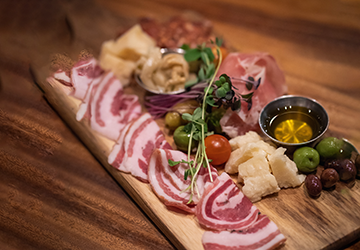
Serving Tips and Tricks
Make sure all meats and cheeses are at room temperature before serving so they can develop their full flavor. Provide guests with small forks or toothpicks to use as they sample the different items on the board.
Presentation and Aesthetics
Make your deli stand out by emphasizing its visual appeal. Combine combinations of various shades, textures and facades to create engaging presentations. Let your creativity run free when designing your arrangement, and remember that a generous, full table is always tempting.
Conclusion
Creating an entertaining sausage board requires attention to detail, a selection of high-quality ingredients, and attention to appearance. Follow these tips and consider your guests' tastes and preferences to create memorable, delicious appetizers that everyone will love.
FAQs
1. What is bacon?
Charcuterie is the art of preparing and assembling charcuterie, cheese, and other side dishes, traditionally served on wooden boards or platters.
2. How much meat and cheese should be served per person?
A general rule of thumb is to serve 60 to 90 grams of meat and cheese per guest, depending on hunger levels and other meals.
3. Can I prepare a vegetarian or vegan sausage platter?
Absolutely! Replace meat with plant-based alternatives, such as marinated tempeh, vegan cheese, and a variety of vegetables, fruits, and spreads.
4. How far in advance can I prepare the sausage boards?
It is best to assemble the charcuterie board within a few hours of serving to ensure the freshness and quality of the ingredients. You can also prepare the ingredients ahead of time and store them individually in the refrigerator.
5. How to store the leftover bacon?
Wrap remaining meat and cheese in parchment paper or plastic wrap and store in the refrigerator. Most items have a shelf life of a few days, but be sure to check for freshness before eating.
